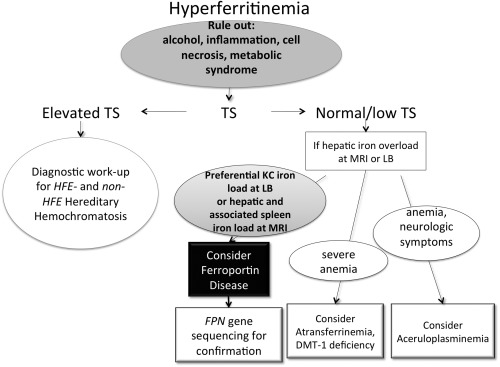Figure 2.

Diagnostic algorithm for FD. In patients with unexplained hyperferritinemia, regardless of the level of serum iron, cofactors and comorbidities associated with increased serum ferritin (e.g., chronic alcohol consumption, metabolic disturbances or obesity, inflammation, etc.) should be considered first. In the absence of these comorbidities, or if the iron abnormalities persist after these conditions have been treated effectively, if transferrin saturation (TS) is persistently elevated, HFE or non–HFE‐HC should be excluded. In patients with increased serum ferritin levels and normal to low transferrin saturation, in the absence of common causes of hyperferritinemia (see above), the work‐up should focus on documenting an iron overload state by liver biopsy (LB) or magnetic resonance imaging (MRI). If so, depending on the pattern of iron distribution (e.g., preferential Kupffer cells, Kupffer cells, iron overload) and/or accompanying symptoms (e.g., severe anemia and/or neurologic disorders), FD or other much rarer hereditary iron‐loading diseases should be considered.
